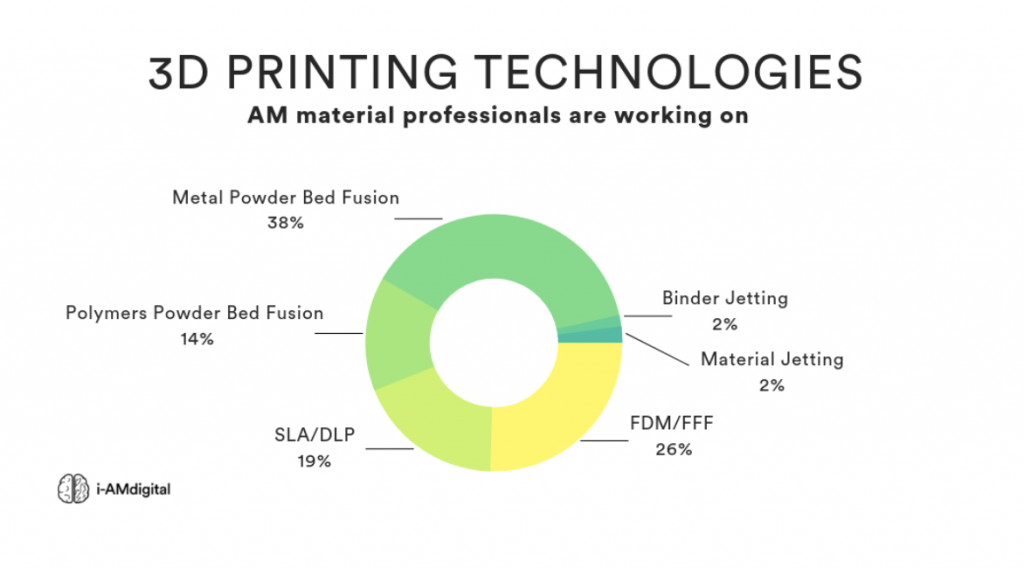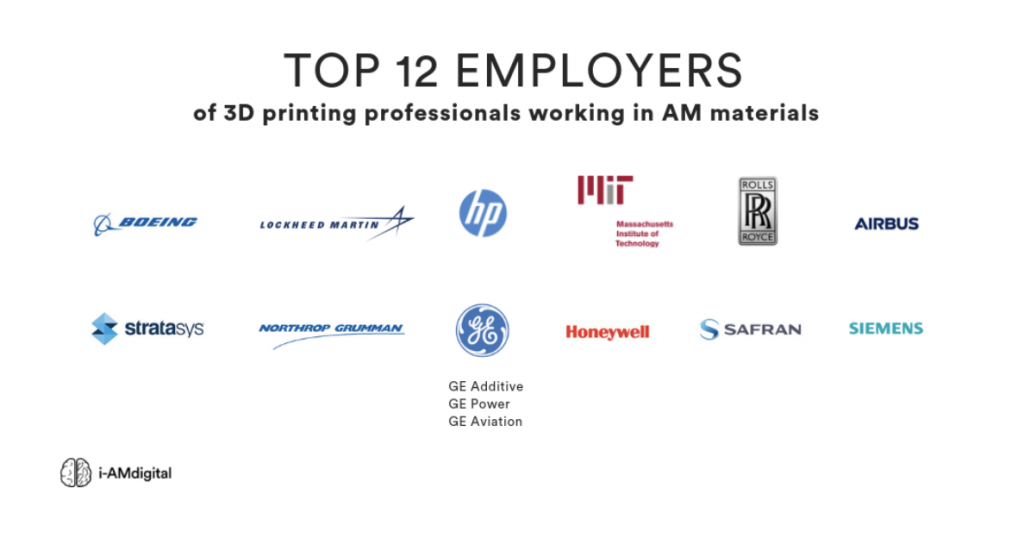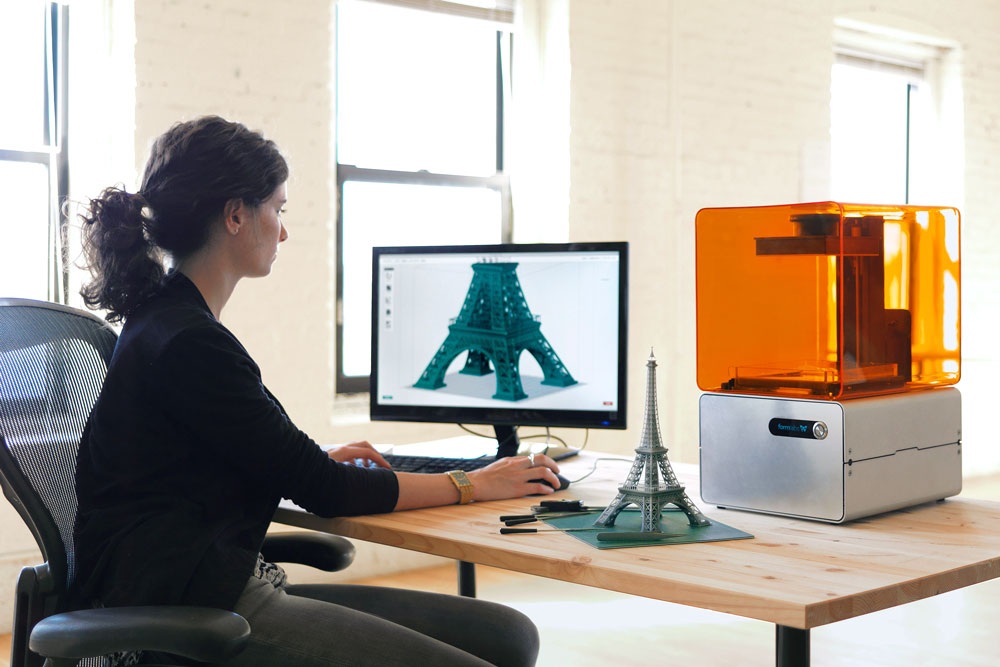Recently, at AMPM2019 Conference in Phoenix, Additive Manufacturing industry experts identified materials as one of the main challenges of the 3D printing industry and its growth. Developing more materials in Additive Manufacturing means a higher demand for materials specialised professionals in the AM industry.
i-AMdigital has researched the talent landscape within AM materials, to identify where this talent can be found, and what the top employers, universities and technologies used are.
Who are the materials specialists, working with 3D Printing?

According to LinkedIn data analysis from June 2019, the three educational backgrounds that dominate the profiles of the AM material specialists are Material Sciences, Materials Engineering and Mechanical Engineering, with respectively 28%, 25% and 20%.
Mechanical and material engineering often go hand in hand, and the design of any machine cannot be separated from the materials used to make it, or the materials it will use itself. Moreover, materials must be developed and tested to achieve certain mechanical properties required by certain applications, verticals, markets and certification. This is the reason for the large percentage of mechanical engineering backgrounds. We are likely to see an increase in this combination of mechanical and materials engineering.
Whilst the metallurgical engineering background still holds a rather small percentage (3%), we are likely to see an increase in this, as the metal AM business is booming, and experienced metallurgists are increasingly highly sought-after.
Top 3D Printing technologies, used by AM materials specialists

i-AMdigital found that an impressive 38% of AM materials specialists primarily work with the Metal Powder Bed Fusion technology. This large percentage can be explained by the impressive boom in the metal AM market; according to the Wohlers’ Report 2019, the industry revenue from metals grew by 41.9% during 2018. This reflects the shift in the AM industry towards developing solutions better suited for serial production rather than rapid prototyping.
With 38% of material specialists working in metal AM, a 42% growth of the Metal AM market, and only 3% of material specialists coming from a metallurgy background, we can see a significant skills gap; the industry needs more materials specialists with metal background.
Who are their employers?

i-AMdigital investigated the companies employing the highest amount of AM material specialists, and found that they spread across several sectors of the industry; from end-users to 3D Printing Original Equipment Manufacturers.
The large employment of material specialists in end-user companies can be explained by the increase in the adoption of 3D Printing. According to Scupteo’s 2018 The State of 3D Printing report, there was an increase of 21% in the adoption of 3D Printing in production environments between 2017 and 2018. End-users, like Boeing and Rolls Royce, are increasingly adopting AM for producing more complex parts with more intricate design, as well as for tooling and prototyping. Employing material specialists is crucial for these end-users to adopt the technology efficiently and to help understand the capabilities of the machines and materials at hand. The AM OEM’s work hand in hand with end-users in order to (together) develop new applications, materials and software – and for that, they need material talent.
3D printing giants HP and Stratasys are natural appearances on this list of largest employers; their continuous development of new machines and applications require them to have a strong team of materials specialists to help drive their R&D departments. Moreover, the new markets and applications that are being explored by the AM OEM’s require new materials, which requires more AM material scientists and specialists.
Where are the AM material specialists located, geographically?

Which educational institutions house the talent?
www.i-AMdigital.com is a free platform dedicated to upskilling talent in the 3D Printing industry, in the pursuit of providing the industry and employers with a continuously growing talent pool.
The post Additive Manufacturing Materials Talent Insight appeared first on 3DPrint.com | The Voice of 3D Printing / Additive Manufacturing.



